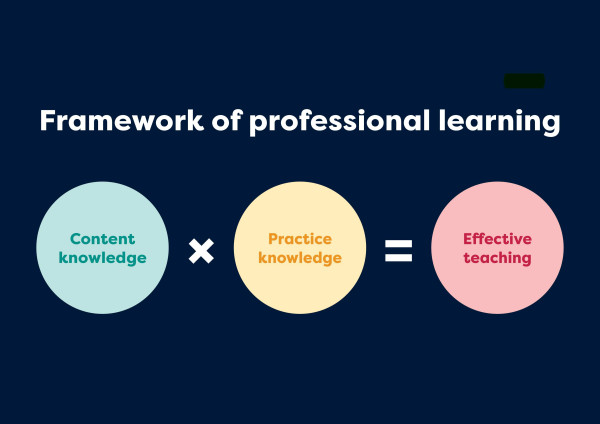Structured Literacy (the secret sauce!)
Structured literacy planning
Professional learning and effective change in any organisation is hard; and it takes time to do well and then embed. Structured literacy implementation is not as simple as adding some phonics to what you already do, or purchasing some new readers, or completing an online course. Silver bullets and simple fixes are seductive but usually not as effective as they may seem at first, or the sales person says.
For those who are familiar with theories about learning to read you will know about the so called ‘Simple View of Reading’ from Gough and Tunmer (Gough & Tunmer, 1986).

This model theorises that reading is a function of this simple mathematical formula where the ability to decode the words (word recognition in this version) multiplied by your vocabulary and understanding of language (language comprehension) come together to determine how well you can understand the text you are reading. Because the formula is a mathematical one, if either side of the multiplication equation is low then the overall outcome will also be low, and anything times zero is zero.
So if you have poor decoding skills it doesn’t matter how good your vocabulary or subject knowledge is, you won’t be able to understand the text. Or as Anita Archer famously put it: “There is no comprehension strategy powerful enough to compensate for the fact you can't read the words.” (Archer, 2008). The reverse is true as well, where simply decoding the word without knowing what they mean (alongside having some basic strategies to use to understand the meaning of parts of the text that are unfamiliar) also means overall comprehension will be low.
I would argue a similar framework and logic can be applied to professional learning.

It is essential that teachers understand both the theory and the practice of what they are doing in the classroom. One without the other won't result in the maximum possible benefit to learners.
Content Knowledge:
Often in research literature this is referred to as pedagogical content knowledge or PCK. This is the understanding of how the brain works, learning happens and how previous learning and understanding builds on what learners already know. It is also the domain-specific knowledge relevant to the particular curriculum area - such as the stages of language development or phonological awareness in literacy, conceptual understanding in science, and so on. If teachers have a clear understanding of the stages of the development of knowledge and understanding, and the small steps in each one, then their teaching can be targeted to specific learning needs of each learner. They can take a programme or resource and tailor it to the interests or cultural context of the group or class in front of them. They can take the responses to individual questions or tasks and adapt to the teachable moment.
Without this knowledge teachers and leaders can be restricted by programmes and end up simply following through sequences of activities that may not actually be the best fit or support learning in the best way possible. They are also not able to critically reflect on the impact they are having and the intended, or unintended, consequences and learning taking place.
Practice Knowledge:
Teachers need to know how to manage and effectively engage ākonga in their learning spaces. How to design learning and teaching programmes. How to adapt and be responsive to the constantly shifting sands of life in the classroom. How to navigate the complexity of relationships, culture, diversity and personalities that again can interact and change over time. This fluency is something that often comes with time and experience, but can also obviously be learned through effective professional learning systems and working with a more experienced mentor or colleague.
We know from the experience of early career teachers in particular that the ability to refine and nuance curriculum and programme delivery often comes after the fundamentals of things like behaviour management and managing transition times are in place.
This same logic applies to other professional learning and change as well. The ability to tailor group work to suit the particular learning objective, or the dynamics of the group involved, is something that comes more naturally to more experienced teachers.
This understanding of the interplay between practice and content knowledge is what sits behind our approach to structured literacy professional learning at Tātai Aho Rau. Louisa Moats the prominent literacy researcher and consultant puts it another way in this video. In it she discusses the importance of teachers not simply implementing programmes without the necessary content knowledge. She stresses the importance of teachers being well resourced with quality programmes, but also reinforces the key place of understanding how and why the programmes work and have the impact they do.
These understandings are captured in our Tātai Aho Rau model of Structured Literacy below:
The two components of Content knowledge and Practice knowledge interacting and working together, and building understanding using rapid cycles of teacher inquiry, is the ‘secret sauce’ of what Tātai Aho Rau brings to teacher professional learning programmes in structured literacy. We have a team of experienced and qualified facilitators who can work with you and your team across the current MoE priorities and in both English and Māori medium settings.
Book a call with me or contact the team at learning@core-ed.ac.nz for support with structured literacy implementation in your setting.
 Click image to watch the video
Click image to watch the video

